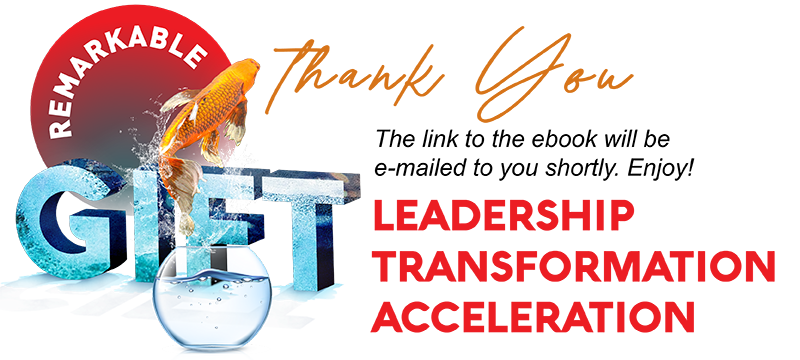As the topic of Learning and Development (L&D) becomes more and more prevalent in the workplace, so does the need for training. In today’s fast-paced world, organizations are increasingly recognizing the critical role that well-designed learning experiences play in fostering employee growth, enhancing skills, and achieving organizational objectives. Instructional design serves as the backbone of effective training programs, equipping L&D professionals with a comprehensive framework to create engaging, impactful, and learner-centered content.
(by Jonathan M. Pham)
What is Instructional Design?
Instructional design (ID) – also called “instructional systems design”/ “instructional systems development” (ISD) – is a process of systematically designing, developing, and delivering instructional materials, with the aim of delivering an efficient, engaging, and inspiring learning experience. It starts with a thorough analysis of the needs and goals of the learners – based on which one may tailor their creations to meet these unique demands.
Examples of instructional design products:
- e-Learning courses
- Interactive learning modules
- Simulations
- Performance support tools
- Training manuals
- Presentations
- Instructor guides
- Lesson plans
- etc.
A versatile discipline, instructional design is applicable across a wide range of domains – including coaching, corporate training, curriculum development, and personal development courses. Instructional designers are found working in various settings, from traditional educational institutions like schools and universities to corporate boardrooms, non-profit organizations, and online learning platforms.

History of Instructional Design
In the 1900s, the U.S. Army developed a series of training manuals to help soldiers learn how to use new technology. These guidelines were designed to be as efficient and effective as possible – with clear instructions and illustrations featured.
Instructional design principles were later adapted for use in schools and universities. In the 1950s, Benjamin Bloom developed a taxonomy of learning objectives that are still in use today. Later, in the 1960s, Robert Gagné came up with a model of instruction that outlined nine essential events for learning to occur.
These days, instructional design is adopted in a variety of settings, including businesses, government agencies, and nonprofits. It is also used in online learning, as more and more people use the Internet to learn new skills.
Examples of Instructional Design
- Story-based learning (Linear narrative)
Here, the power of storytelling is harnessed to convey learning content in a linear and sequential manner. A relatable protagonist embarks on a journey that mirrors the learning objectives, facing challenges or problems that the learners themselves might encounter. As the narrative unfolds, learners emotionally and cognitively engage with the story, making it easier for them to connect with the content and apply it to their own real-world situations.
This method leverages the inherent human affinity for stories to enhance the learning experience, making it both captivating and memorable.
- Performance support tools (Complementing e-Learning)
Designed to complement primarily eLearning courses, performance support tools offer learners timely, just-in-time, and just enough information to assist them in performing specific tasks/ solving particular problems at their workplace. These tools encompass a variety of formats such as checklists, flowcharts, instructional videos, podcasts, infographics, etc. They are intentionally crafted to be easily accessible, relevant, and actionable – ensuring that learners can quickly access the support they need to excel in their roles.
- Gamified learning
Gamification injects elements of play and competition into the learning process, turning it into an engaging and interactive experience. Elements like points, badges, leaderboards, levels, challenges, and rewards are strategically integrated to motivate learners.
Introducing game-like mechanics fosters active participation – specifically, learners are encouraged to continuously assess their performance, which results in a sense of accomplishment and enjoyment. Gamified learning transforms what might otherwise be a mundane learning journey into an exciting and goal-driven adventure.
- Instructional design for online courses
In the digital age, instructional designers are known to employ various online tools and platforms to deliver learning products tailored to online learners. These include Learning Management Systems (LMS), authoring tools, video conferencing platforms, and social media integration. The objective is to provide learners with flexible, convenient, and personalized experiences that can be accessed anytime and anywhere.
Whether through self-paced modules, live webinars, or collaborative online forums, this approach facilitates education on a global scale, breaking down geographical barriers and enabling lifelong learning.
- Instructional design for Blended learning
Here, online and face-to-face learning methods are employed to cater to diverse learning preferences. Blended learning combines elements such as e-learning modules, webinars, podcasts, workshops, seminars, and more. Learners benefit from the convenience and flexibility of online learning while still enjoying the richness of in-person interaction and collaboration.
What Does an Instructional Designer Do?
An instructional designer is a skilled professional dedicated to crafting effective and tailored learning experiences for a specific audience, purpose, and context. Normally, their work revolves around a common process as follows:
- Needs analysis & Goal setting: This involves analyzing the needs/ goals of learners, and determining what they should be able to accomplish in the end. By identifying learning objectives and aligning them with broader organizational goals, instructional designers set the stage for targeted and effective learning experiences.
- Design & Development: Based on the above-mentioned insights, their next job is to design and develop a range of learning materials (interactive videos, games, podcasts, etc.). The ultimate aim is to craft engaging and effective learning experiences that captivate learners, encourage active participation, and facilitate comprehension and retention.
- Implementation & Delivery: Instructional designers are responsible for bringing their creations to life. For this purpose, they may leverage a wide array of tools and platforms to deliver the instruction.
- Evaluation & Feedback: They employ various methods and measures, such as assessments, surveys, reports, Return on Investment (ROI) analysis, and Key Performance Indicators (KPIs), to assess the impact of the instruction.
- Continuous Learning & Innovation: Instructional designers are committed to staying abreast of the latest trends and best practices in education, psychology, communication, and technology. By keeping their finger on the pulse of innovation, they can apply cutting-edge techniques and technologies to create learning solutions that enhance the knowledge, skills, and attitudes of their learners.

Instructional design process
Instructional Design vs Similar Terms
In the realm of education and training, “instructional design” is often used interchangeably with a few other related terms – namely learning design, motivational design, and teaching. Despite overlapping in meaning to a certain extent, each of them has distinct emphases and purposes.
Here, we offer a comparative overview of these terms:
- Instructional design: Instructional design synthesizes principles from educational theory, psychology, communication, and technology to develop learning solutions that enhance the knowledge, skills, and attitudes of learners. It answers the “what” of learning, laying out the content and structure of educational materials.
- Learning design: Here, the focus is shifted toward the “how” of learning. It is concerned with developing interactive experiences that facilitate users in acquiring new information or uncovering fascinating insights on a given topic or subject area. Learning design adopts a user-centric approach, leveraging design thinking and user experience-driven methodologies to deliver engaging, personalized learning experiences.
- Motivational design: Motivational design zooms in on the “why” of learning. It involves applying motivational theories and principles to the design of learning products and experiences – with the aim of boosting learners’ motivation, engagement, and persistence throughout the learning process. To achieve this, a range of techniques are deployed – examples include goal setting, feedback mechanisms, rewards, challenges, autonomy, relevance, and more.
- Teaching: While instructional design, learning design, and motivational design focus on the structure and experience of learning, teaching centers on the “who” of learning. It is the active process of facilitating the learning journey for students or learners. Teaching encompasses tasks such as lesson planning, content preparation, instructional delivery, assessment, and feedback provision.
| Aspect | Instructional Design | Learning Design | Motivational Design | Teaching |
|---|---|---|---|---|
| Primary Focus | What people learn | How people learn | Why people learn | Who helps people learn |
| Definition | Designing learning products and experiences for specific audiences, considering needs and objectives. | Developing interactive experiences that support learning using user-centric design. | Applying motivational theories to boost learner motivation and engagement. | Facilitating the learning process, providing guidance, and creating a positive environment. |
| Key Activities | Needs analysis, content design, delivery, and evaluation. | User experience-driven design, accommodating diverse learning styles. | Application of motivational techniques, considering individual differences. | Planning, delivery, assessment, feedback, and classroom management. |
| Emphasis on | Structured content and delivery methods. | User engagement and experience. | Motivation, engagement, and persistence. | Direct interaction with learners. |
| Measured by | Learning outcomes and effectiveness. | User engagement, satisfaction, and impact. | Motivation levels, engagement, and goal achievement. | Student understanding, progress, and achievement. |
Benefits of Instructional Design
Instructional design is a powerful methodology that offers a multitude of benefits for learners, educators, and organizations alike. Its impact extends far beyond the classroom or training room, making it a critical element in the educational and corporate landscape:
- Reducing training costs
One of the most tangible benefits of instructional design is its ability to reduce training costs significantly. By meticulously aligning learning products and experiences with specific learning objectives and outcomes, instructional designers ensure that resources are used efficiently. Unnecessary or ineffective training is minimized, preventing the wastage of time and financial resources. The result is a streamlined and cost-effective learning process that maximizes the return on investment (ROI).
- Improving learning outcomes
Instructional design is a pathway to improving the quality of education and training. When learners are presented with content that speaks directly to their goals and challenges, they are more likely to excel.
Additionally, instructional designers can measure the impact and effectiveness of these learning experiences through data analysis – ensuring continuous improvement in the process.
- Facilitating skill development
Beyond rote memorization, instructional design encourages the development of essential competencies. Through a diverse range of learning opportunities and activities, learners are prompted to think critically, foster creativity, solve complex problems, collaborate effectively, and communicate with precision.
- Boosting learners’ motivation
Perhaps one of the most transformative effects here is the ability to elevate learners’ engagement. By creating learning products and experiences that resonate with their interests, values, emotions, and goals, instructional designers ignite a genuine passion for learning. Techniques like gamification, storytelling, feedback mechanisms, rewards, and challenges are artfully employed to make learners become active participants in their own education, fostering a sense of ownership and enthusiasm that leads to higher levels of retention and achievement.
Read more: Train the Trainer Model – Investing in Excellence

Types of Instructional Design Models
Instructional design is a dynamic field – various models have emerged over time to offer structured approaches to the process. Here are some of the most common types, each with its own distinct focus and methodology:
-
ADDIE Model
The ADDIE model is a tried-and-true five-stage process, representing:
- Analysis
- Design
- Development
- Implementation, and
- Evaluation.
It serves as a comprehensive framework for instructional designers to identify learner needs, design and develop engaging learning experiences, implement and deliver instruction, and evaluate the effectiveness of the learning program.
-
Merrill’s Principles of Instruction
Merrill’s model emphasizes a task-centered approach, encapsulated in five principles:
- Activation
- Demonstration
- Application
- Integration, and
- Problem-Centered.
It aims to engage learners by activating prior knowledge, demonstrating new concepts or skills, providing opportunities for practice and feedback, integrating learning into real-world contexts, and challenging them with authentic problem-solving scenarios.
-
Gagne’s Nine Events of Instruction
Gagne’s framework delineates the mental conditions necessary for effective learning through nine events:
- Gain attention
- Inform objectives
- Stimulate recall
- Present stimulus
- Provide guidance
- Elicit performance
- Provide feedback
- Assess performance, and
- Enhance retention.
The model offers a structured sequence to capture learners’ attention, inform them of objectives, activate prior knowledge, deliver content, support performance, and enhance long-term retention.
-
Bloom’s Taxonomy
Bloom’s Taxonomy classifies cognitive levels of learning into six categories:
- Remembering
- Understanding
- Applying
- Analyzing
- Evaluating, and
- Creating.
It provides a framework for defining learning objectives, designing relevant activities, and assessing higher-order thinking skills. Instructional designers may use this taxonomy to create well-rounded learning experiences that promote critical thinking and knowledge retention.
-
Dick and Carey Model
This systemic approach is comprised of nine steps:
- Identify instructional goals
- Conduct instructional analysis
- Analyze learners and contexts
- Write performance objectives
- Develop assessment instruments
- Develop instructional strategy
- Develop and select instructional materials
- Design and conduct formative evaluation, and
- Revise instruction.
Here, the focus is on aligning instruction with goals, thoroughly analyzing content and learner needs, setting clear objectives, creating effective materials, and continuously evaluating and refining instruction.
-
Kemp Design Model
Kemp’s model takes into account various factors influencing instructional design – hence, users may flexibly address complex instructional challenges and create tailored learning solutions. It is made up of nine elements:
- Identifying instructional problems and goals
- Examining learner characteristics
- Analyzing subject content and task components
- Stating instructional objectives
- Sequencing content
- Designing instructional strategies
- Planning messages and delivery
- Developing evaluation instruments, and
- Selecting resources.
-
Backward Design Model
This model starts with the end in mind and involves three stages:
- Identify desired results
- Determine acceptable evidence, and
- Plan learning experiences and instruction.
It places a strong emphasis on defining learning outcomes and assessments before planning learning activities and instruction. The approach ensures alignment between goals, assessments, and instructional strategies.
-
SAM Model
The Successive Approximation Model (SAM) is an iterative and agile instructional design framework that aims to streamline the design and development process. Unlike some traditional models that follow a linear path, SAM is highly flexible and adaptive, making it particularly suitable for projects with evolving content or rapid changes in requirements:
- Preparation: In this initial phase, the project team conducts a thorough analysis of the project’s goals, target audience, and constraints. This stage also includes establishing a clear project plan and defining the scope of work.
- Iterative Design: SAM’s hallmark feature is its iterative design process. Instead of designing the entire course or program at once, designers come up with a prototype or “alpha” version of the instructional materials – which is evaluated and refined in a cyclical manner through a series of review and feedback cycles.
- Development: After several iterations and refinements, the prototype evolves into a more complete “beta” version. This stage involves further development and fine-tuning of the learning materials and resources based on the feedback received during the iterative design phase.
- Implementation: Once the beta version is ready, it is rolled out for testing and validation with a select group of learners. This phase helps identify any remaining issues and ensures that the final product aligns with the learning objectives.
- Evaluation: The final stage involves a comprehensive evaluation of the learning program’s effectiveness. Designers assess whether the stated learning goals have been met and gather feedback from both learners and stakeholders. Any necessary adjustments are made based on this evaluation.
-
ASSURE Model
Particularly suited for technology-enhanced learning environments, ASSURE is comprised of the following stages:
- Analyze learners: This stage involves assessing the characteristics and needs of the learners. Designers gather information about the learners’ prior knowledge, learning styles, interests, and any special requirements that may affect the instructional design.
- State objectives: Clear and measurable learning objectives are essential for effective instruction. In this stage, designers define what learners should be able to achieve after completing the instruction.
- Select methods, materials, and media: Based on the analysis of learners and defined objectives, designers choose appropriate teaching methods, instructional materials, and media that align with the learning goals. This phase also takes into consideration the integration of technology and other resources.
- Utilize media and materials: Designers develop or adapt the chosen materials and media to create the instructional content. The focus here is on creating engaging and accessible learning materials.
- Require learner participation: Learner engagement is a key element of effective instruction. Designers plan activities and strategies that actively involve learners in the learning process, promoting active participation and understanding.
- Evaluate and revise: Assessment and evaluation are ongoing processes in the ASSURE Model. Designers continuously gather feedback, assess learner performance, and make necessary revisions to improve the effectiveness of the instruction.
Components of Instructional Design
-
Needs analysis
- Purpose: The needs analysis component serves as the foundation of instructional design. It involves identifying the gap between learners’ current performance and their desired level of proficiency. Additionally, it seeks to understand the underlying causes of this performance gap.
- Focus: Analyzing the needs and expectations of both learners and stakeholders is crucial. This involves considering the characteristics, preferences, and requirements of the target audience.
-
Learning objectives
- Purpose: Learning objectives articulate clear and measurable outcomes that learners are expected to achieve by the end of the instruction. They provide a concrete roadmap for instructional design and ensure alignment with the identified needs and goals.
- Focus: Crafting specific and measurable objectives that reflect both learner needs and stakeholder expectations is essential for effective instructional design.
-
Learning content
- Purpose: Learning content encompasses the selection and organization of relevant information, concepts, skills, and procedures needed to help learners attain their objectives. It ensures that learners receive accurate, current, and consistent knowledge.
- Focus: Careful curation and organization of content to support effective learning experiences is paramount. Content should be structured in a logical and coherent manner.
-
Learning activities
- Purpose: Activities are the heart of instructional design – they provide learners with interactive and engaging experiences to acquire, apply, and practice their learning content.
- Focus: Designing activities that align with learning objectives and selecting appropriate methods, modes, media, and tools for delivery are key considerations. Engagement, interactivity, and relevance are central to successful activities.
-
Learning environment
- Purpose: The learning environment encompasses both physical and social contexts in which learning occurs. It can significantly impact learner motivation and engagement.
- Focus: Designing an environment that fosters a positive and supportive atmosphere for learning is essential. It may involve considerations such as physical classroom settings or the design of online learning platforms.
-
Assessment
- Purpose: Learning assessment involves designing valid and reliable measures to evaluate whether learners have achieved their objectives. It provides valuable feedback and reinforcement to learners on their performance.
- Focus: Developing assessments that align with learning objectives and objectives is critical. Constructive feedback and opportunities for improvement are integral for this purpose.
-
Evaluation
- Purpose: Learning evaluation involves the collection and analysis of data to gauge the effectiveness and impact of instruction on learners, stakeholders, and the organization. It drives continuous improvement.
- Focus: Analyzing data and making informed recommendations for enhancement based on evaluation results is central to the instructional design process. Data-driven decision-making ensures ongoing improvement in the design and delivery of learning experiences.
Principles of Instructional Design
- Alignment: Alignment is the cornerstone of instructional design, ensuring that all elements of a learning experience harmoniously work together. This means that learning objectives, content, activities, and assessments should be in perfect sync. For instance, if the objective is to master a software program, the content should cover its features, activities should involve hands-on practice, and assessments should evaluate the learner’s proficiency in using the program.
- Active Learning: Learners are not mere recipients of information; they are supposed to be active participants in the learning process. For this purpose, they must be provided with the chance to engage in activities that require critical thinking, problem-solving, and practical application (e.g. interactive exercises, simulations, and hands-on assignments).
- Feedback: Timely and specific feedback provides learners with valuable insights into their performance, enabling them to identify strengths and areas that require improvement. Constructive feedback empowers learners to adjust their approach, ultimately leading to deeper comprehension and mastery of the material.
- Individual differences: Recognizing and respecting the diverse learning styles, prior knowledge, and motivations of learners is essential. Instructional designers must cater to these individual differences, offering a range of learning options and allowing learners to progress at their own pace.
- Authenticity: Authentic learning experiences are those that resonate with real-world applications. Learners should see the direct relevance and applicability of what they are learning to their lives and future careers.

How to Become an Instructional Designer
Landing a job as an instructional designer is an exciting journey that requires a blend of education, experience, skills, and creativity. Here are detailed steps to help you embark on the path:
- Getting qualifications: Begin by pursuing a certificate, diploma, or bachelor’s degree in instructional design or a related field such as education, psychology, communication, or technology. Look for accredited programs that provide a comprehensive understanding of ID principles and practices. Many institutions offer online courses, which are accessible to learners worldwide.
- Building a portfolio: Create a robust portfolio to showcase your skills and capabilities to prospective employers or clients. Include samples of your projects, such as eLearning courses, modules, videos, podcasts, or games. Your portfolio serves as tangible evidence of your abilities and can set you apart in the competitive job market. Utilize tools like Articulate Storyline, Adobe Captivate, or web platforms like WordPress to create and present your work professionally.
- Gaining relevant experience: Experience is a valuable asset. Consider working in a relevant academic field, such as teaching, training, curriculum development, or e-learning development. Practical experience in these areas will provide insights into the needs and challenges of learners and educators. You can also volunteer or intern with organizations that require instructional design services, including schools, universities, corporations, non-profit organizations, or online learning platforms.
- Developing essential skills and qualities: Instructional designers need a diverse set of skills and qualities to succeed. These include teamwork, emotional intelligence to understand learner needs/ motivations, communication for conveying complex concepts, strong writing & organizational skills, etc.
- Searching for opportunities: Begin your job search by applying for positions that match your qualifications, skills, and interests. Utilize online job platforms like LinkedIn, Indeed, Glassdoor, or industry-specific resources like eLearning Industry. Create an online presence through a personal website or blog to showcase your portfolio and attract potential clients or employers.
- Stay Informed: Stay updated on the latest trends and technologies in instructional design. The field is continuously evolving, and ongoing learning is essential. Read industry publications, attend conferences, webinars, and workshops, and enroll in online courses or certifications to stay current.
- Foster creativity: Instructional designers are tasked with creating engaging and effective learning experiences. Cultivate your innovation by exploring new approaches, technologies, and instructional design techniques. Experiment with different media and strategies to design learning materials that captivate and inspire learners.
Instructional Design Books
- Design for How People Learn by Julie Dirksen: This book explains the principles of understanding, memory, and attention, and how to use them to design learning products and experiences that can help learners learn and retain information. Accessible metaphors and examples are used to illustrate various concepts and techniques related.
- The Accidental Instructional Designer by Cammy Bean: The publication covers various aspects of instructional design, such as learning theories, instructional strategies, e-learning tools, project management, and common pitfalls. Additionally, it also shares insights and tips from the author’s personal experience.
- E-learning by Design by William Horton: A comprehensive guide on how to create effective e-learning courses and programs, the book covers various topics, such as learning objectives, content selection and organization, instructional methods, learning activities, assessments, media and technology selection, and evaluation.
- Agile for Instructional Designers by Megan Torrance: Here, the author introduces the concept of agile project management to the field of instructional design – and explains how to use agile methods and techniques to create learning products and experiences responsive to the changing needs/ expectations of the learners and the stakeholders.
- Map It: The Hands-on Guide to Strategic Training Design by Cathy Moore: This book is a practical guide on how to create action-oriented learning products and experiences that can help learners achieve their goals and solve their problems. It shows how to use a process called action mapping to analyze the performance gap, identify the best solutions, design realistic scenarios, and measure the impact of the learning products and experiences.
Future of Instructional Design
The field of instructional design is constantly evolving. As new technologies emerge, one must be able to adapt and create innovative learning experiences.
One trend that is currently on the rise is the prevalence of mobile learning. The increasing popularity of smartphones means that more learners are accessing content on their mobile devices. As a result, instructional designers must be able to create content that can be consumed on these devices.
Another trend worth mentioning is the move toward more collaborative and social learning experiences. This means that instructional designers must be able to create content that encourages collaboration and interaction among learners.

Discover ITD World’s Instructional Design Certificate Course
The future of instructional design is bright – given the continuing rise of new technologies, as well as the ongoing demand for learning and development. If you are interested in this career, now is the time to get started!
ITD World’s Instructional Design Certificate course will give you the knowledge and skills you need to succeed in this field. Our Certificate in Instructional Design and Development (CIDD) training solution covers various topics, including learning theories, adult learning principles, instructional design models, and eLearning technologies. In addition, the course includes a practicum where you will have the opportunity to apply what you have learned to a real-world project.
Enroll today and get started on your journey to becoming an instructional designer!
Other resources you might be interested in:
- Mastering Talent Management: Strategies for Organizational Success
- The Role of Performance Management in Talent Management
- Human Resource Management: Key Foundations & Best Practices
- Mentoring: Guide to Establishing a Win-Win Relationship




